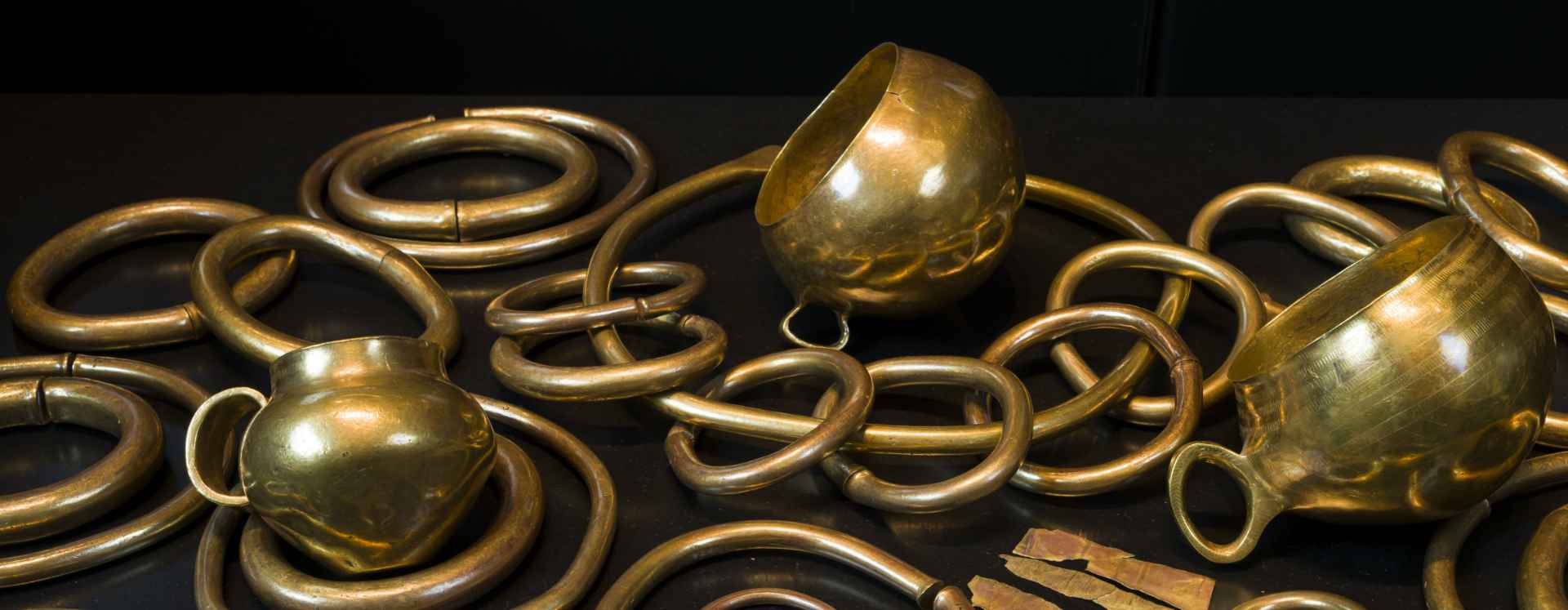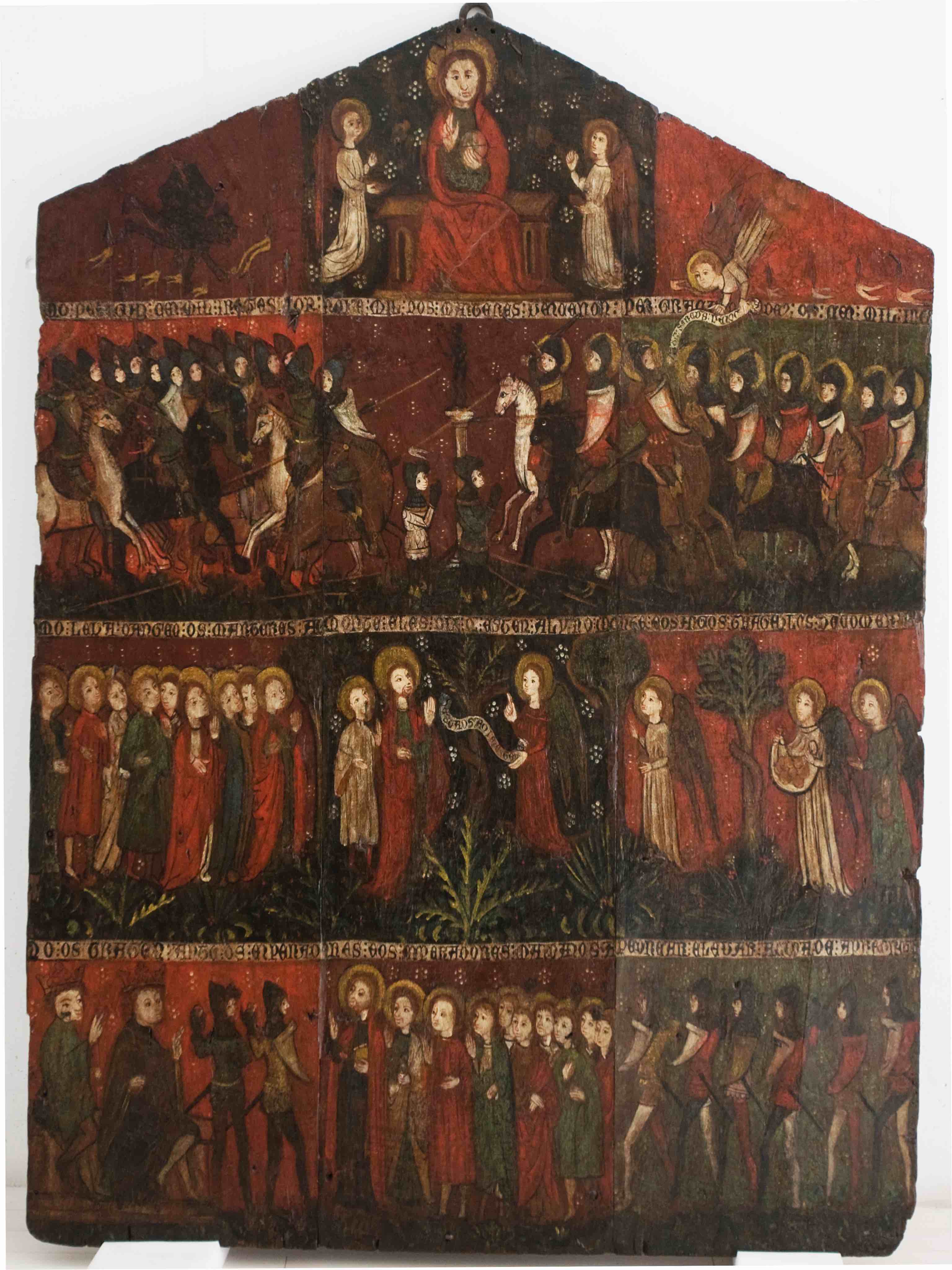Belvís Altarpiece
This altarpiece owes its name to the place for which it was made: the church of Santa María de Belvís convent in Santiago de Compostela. Its importance lies in the fact that it is the only altarpiece from the medieval period painted on wood that has reached us here in Galicia.
Despite its author's lack of expertise, its excellent preservation, its unique structure, the story it tells and the recovery of its original text in the Galician vernacular, also make it of transcendental importance on the Peninsula. Linked to the linear Gothic style, its structure corresponds to the pentagonal typology developed in the Crown of Castile during the 13th-14th centuries, few fragments of which have survived.
From top to bottom and from left to right, the altarpiece narrates the legend of Saint Acacius and the ten thousand martyrs of Mount Ararat. This saint was greatly revered in Europe during the Middle Ages and his cult in Galicia is documented as early as 1288. Today, its history is incomplete due to losses to the sides and underside of the piece.
In addition to the historical-artistic importance of the altarpiece, its disappearance and happy discovery in 2005 in a private collection is unique. Its existence was known from a black and white photograph taken on the occasion of its inclusion in the Galician Regional Exhibition of 1909, but its whereabouts had been unknown since 1944.
After its discovery, and thanks to a generous deposit by its current owners, it has been on public display at the Museum of Pontevedra since 2010. It can now be seen in the Castelao Building along with other important works from the period.
Label
More information
The legend of St. Acacius and the ten thousand martyrs on Mount Ararat is the story of a collective conversion in the 2nd century AD. A whole series of historical inconsistencies cast doubt on the existence of this character, who seems more like the invention of an apocryphal text from the time of the Crusades.
Legend has it that Acacius was a Roman general who, a few hours before facing a far superior enemy, was encouraged by an angel to profess the Christian faith. He and his army converted, winning in battle, but were tried for treason by the emperors Hadrian and Antoninus, who condemned them to death for not renouncing their faith.



